When I see a small mammal swimming in the water, there are only a few choices– at least I thought. One animal had me stumped.
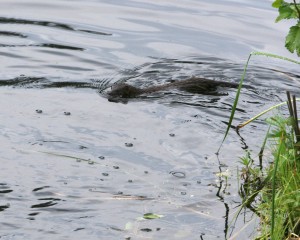
Mink have silky brown to black fur with a white chin patch. They average two feet in length but one-third of that is their tail.
The animal wasn’t a beaver because only a beaver’s wedge-shaped head shows when swimming. The tail wasn’t narrow and snaking behind like that of a muskrat. The animal didn’t have the sleek fur coat of a river otter and otters swim with very little of their back exposed.
What was left in the mammal book for an animal that size? An American mink.
Mink are a member of the weasel family like marten and otters, not the rodent family like beavers and muskrat. Like other members of the weasel family, mink utilize musk (a foul-smelling liquid) to mark their territories and homes. Like skunks they use the musk when threatened or frightened but thankfully it doesn’t smell as bad.
However, the anal pouches that hold the musk can be forcefully evacuated so the musk shoots up to one foot and creates a noxious cloud around the mink. The musk helps the mink defend itself against predators such as great horned owls, hawks, marten, fishers, coyotes, foxes, bobcats, Canada lynx and river otters.
Mink are also predators to a wide variety of animals on land and in water. As a carnivore, they eat small mammals, fish, crayfish, crabs, amphibians, reptiles, birds and even invertebrates.
Throughout the year they prey on small to medium-sized mammals such as muskrats, rabbits, squirrels, voles and mice. In the spring waterfowl comprise a significant portion of their diet as they kill brooding hens on nests, eggs, nestlings and other adult ducks.
Mink are weak swimmers compared to many fish so they focus on the small and slow fish like suckers, catfish, perch and shiners. They occasionally prey on larger fish. While river otters also prey on fish, if the range of otters and mink overlap they usually don’t compete since the otter is a stronger swimmer and can forage in deeper water.
Since a mink’s eyesight is better out of the water than in the water (unlike truly aquatic mammals), they peer through the surface of the water to look for prey. Shorelines with brushy vegetation and overhanging banks are advantageous for mink because they offer concealment from prey and also increase prey abundance.
Mink take their prey by forcefully biting the animal’s neck. They have been known to prey on muskrats but usually they are juvenile muskrats. When there is an abundance of prey, mink will cache the excess.
Despite a lot of their prey being aquatic, mink mainly travel on land and then move in and out of the water as needed. They aren’t specialized swimmers like river otters but they can dive nearly 20 feet and swim underwater for 114 feet. On land, they will climb trees and often rest in tree cavities.
Occasionally mink will be seen during the day but they tend to be more active at night, dawn and dusk. Since they often frequent beaver ponds to prey on muskrats within, look for the tell-tale signs of what they don’t look like to identify these sneaky mink.

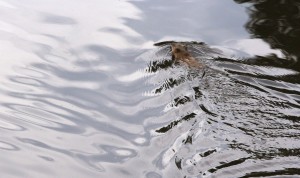
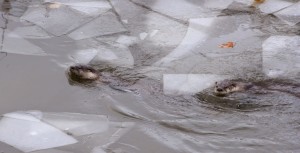
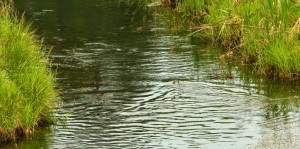
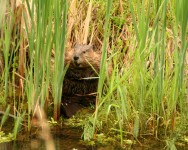
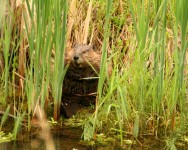
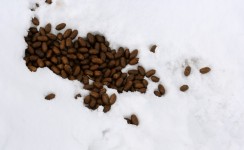
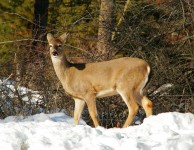
Weasel on back porch up nine mile..weird